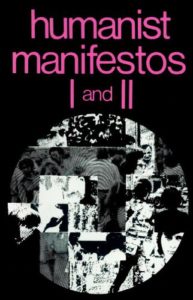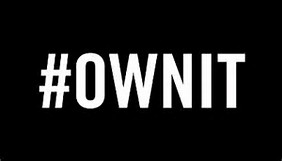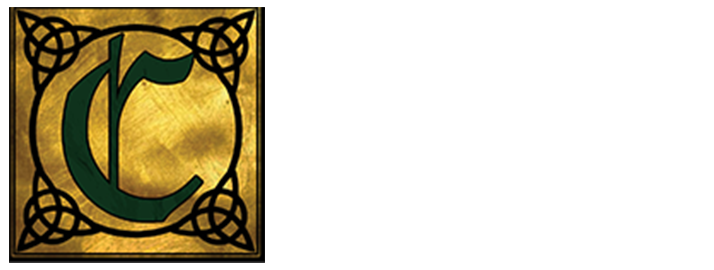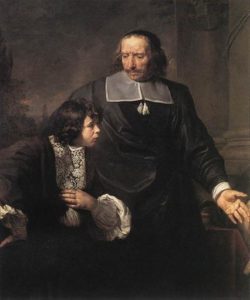The Marks of a Christian Teacher: A Vocational Description [1]
The true function of the teacher is to create the most favorable conditions for self-learning. True teaching is not that which gives knowledge, but that which stimulates pupils to gain it. One might say that he teaches best who teaches least.[2]
 “I do not want you to believe anything I tell you.” My mantra was repeated daily.
“I do not want you to believe anything I tell you.” My mantra was repeated daily.
“I want you to be Bereans. The Bereans did not take at face value what Paul said but searched Scripture for themselves to see if he was correct.”[3]
“This is not Eckelology.” The comment always brought smiles. More serious expressions when I said, “We study God’s Word for the sake of God’s world.”
“My responsibility as a teacher is to make sure you become lifelong learners. If you only learn to follow an authority’s words without thought, you will allow anyone with the loudest voice or the most letters behind her name to sway your thinking.”
“You need to own what you believe. The one word definition of education is ownership.”
 Since the 1980’s my students have read things like Humanist Manifestos I & II, held discussions with atheists invited to the classroom, compared the Enuma Elish with Genesis, debated rock DJ’s over sexuality in music, held dialogues with impaneled doctors about in vitro fertilization, interviewed college students on their campuses, critiqued full length feature films, exegeted Scripture, written decidedly biblical points of view without chapter & verse, and practiced in real-time settings, how to clearly communicate Christian truths with respectful conviction.
Since the 1980’s my students have read things like Humanist Manifestos I & II, held discussions with atheists invited to the classroom, compared the Enuma Elish with Genesis, debated rock DJ’s over sexuality in music, held dialogues with impaneled doctors about in vitro fertilization, interviewed college students on their campuses, critiqued full length feature films, exegeted Scripture, written decidedly biblical points of view without chapter & verse, and practiced in real-time settings, how to clearly communicate Christian truths with respectful conviction.
 Students came to own their beliefs. I made no apologies for having students write papers. Writing made a pupil own their ideas. Students hated it when I answered their questions with questions. But the answers they discovered, they owned. Projects were created for innovative learning. Lessons were sewn deep in the soil of student ownership. Students were taught the books and tools necessary to study the Bible for themselves. Ownership became personal and practical.
Students came to own their beliefs. I made no apologies for having students write papers. Writing made a pupil own their ideas. Students hated it when I answered their questions with questions. But the answers they discovered, they owned. Projects were created for innovative learning. Lessons were sewn deep in the soil of student ownership. Students were taught the books and tools necessary to study the Bible for themselves. Ownership became personal and practical.
 Ownership suggests we should hyphenate teaching-learning. I believe that the process goes both ways. A student learns when she teaches and is able to teach when she learns. One Hebrew word, lamad,[4] can be translated either “teaching” or “learning” depending on the context. We should be less concerned with the delivery of material and more concerned with how we deliver the student to the material. Becoming skilled at how to craft questions, create projects, and construct discussions brings learning to the learner.
Ownership suggests we should hyphenate teaching-learning. I believe that the process goes both ways. A student learns when she teaches and is able to teach when she learns. One Hebrew word, lamad,[4] can be translated either “teaching” or “learning” depending on the context. We should be less concerned with the delivery of material and more concerned with how we deliver the student to the material. Becoming skilled at how to craft questions, create projects, and construct discussions brings learning to the learner.
Biblical instruction is content-centered, teacher-directed, student-discovered, life-related, service-enacted learning for the next generation (Ps 71:14-18; 78:1-8).[5]
- Content-centered. Capital “T” Truth does exist and can be known; therefore people are responsible to the laws of God’s Word and His world (Deut 4:5-9; 30:11-16). Curriculum is based on the principle that all Truth originates from God (Is 28:23-29), all truth is inclusive within His Truth (heaven and earth are His, Josh 2:11; 2 Kings 19:15; 2 Chr 2:12), and all truth is God’s Truth (Ps 119:152, 160).
- Teacher-directed. The teacher is God’s authority in the school’s sphere of influence (Prov 23:12; Eph 4:11-12; 1 Thess 5:12, 13; Heb 13:17). Professors bear the responsibility of clear commitment to and communication of “true Truth” (2 Tim 2:14-4:5; Titus 1:9).
- Student-discovered. Students are accountable for the privilege of teaching-learning (Prov 13:13, 16, 18; 20:15; etc.; Gal 6:6). If this is God’s world, He made it, and it is important to Him, it should be important to us (1 Chr 29:11; Neh 9:6; Ps 33:6-11; 50:9-12; 89:11). As creatures responsible to The Creator, students have been given responsibilities to rule the creation, including one’s studies (Gen 1:28; 2:5, 15, 19-20; Ps 8:5-8).
- Life-related. God’s common grace creates common truth for the common good for common lives of all people (Gen 39:5; Ps 145:9, 15-16; Matt 5:44-45; Lk 6:35-36; Jn 1:9; Acts 14:16-17). God’s law addresses all of life for everyone (Deut 30:11-15; 1 Tim 1:8-11). We are responsible to develop biblical, wisdom thinking skills (Prov 2:1-6; Col 2:8; Heb 5:11-14). Wisdom is how we better understand the world (Proverbs 8:12-36).
- Service-enacted. There is a standard of goodness (Titus 1:8), to be modeled (2:7), and practiced (2:14; 3:1, 8, 14)—something of praiseworthy quality or measured with excellent results. Teaching must link sound doctrine to doing what is good (2:1, 3).
 Ownership within the teaching-learning process connects truth to life, theory to practice, person to vocation. John W. Peterson’s hymn “A Student’s Prayer” sings of ownership:
Ownership within the teaching-learning process connects truth to life, theory to practice, person to vocation. John W. Peterson’s hymn “A Student’s Prayer” sings of ownership:
May the things we learn, so meager, never lift our hearts in pride
Till in foolish self-reliance we would wander from Thy side.
Let them only bind us closer, Lord, to Thee, in whom we find
Very fountainhead of Wisdom, Light and life of all mankind.
[1] Find Part One here. This series was first published at Emerging Scholars Network. Dr. Eckel has served the Christian educational community for over 30 years; teaching junior high through graduate school. Mark and Robin Eckel live in Indianapolis, IN, sharing their gifts in their local church, Crossroads Community (PCA), Fishers, IN. Mark is President of The Comenius Institute. [See our one minute video here.] Dr. Eckel practices teaching-learning at his church, with The Masters Study, Capital Seminary & Graduate School, and anyone who wants to learn.
[2] John Milton Gregory. 1884, 1917, 2007. The Seven Laws of Teaching. Filiquarian Publishing, pp. 77-78.
[3] Acts 17:11.
[4] Kaiser, Walter. 1980. lamad. In The Theological Wordbook of the Old Testament. Edited by R. Laird Harris, Gleason L. Archer, Jr., and Bruce K. Waltke, 1:480. Chicago, IL: Moody.
[5] Find my educational philosophy at https://warpandwoof.org/marks-philosophy/educational/


